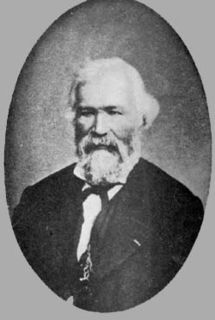
Ergosines are ergoloid-like chemicals made by Claviceps purpurea .

Ergosines are ergoloid-like chemicals made by Claviceps purpurea .

Year 857 (DCCCLVII) was a common year starting on Friday of the Julian calendar.

Ergot or ergot fungi refers to a group of fungi of the genus Claviceps.

Ergotism is the effect of long-term ergot poisoning, traditionally due to the ingestion of the alkaloids produced by the Claviceps purpurea fungus—from the Latin clava "club" or clavus "nail" and -ceps for "head", i.e. the purple club-headed fungus—that infects rye and other cereals, and more recently by the action of a number of ergoline-based drugs. It is also known as ergotoxicosis, ergot poisoning, and Saint Anthony's fire.

Poa pratensis, commonly known as Kentucky bluegrass, smooth meadow-grass, or common meadow-grass, is a perennial species of grass native to practically all of Europe, North Asia and the mountains of Algeria and Morocco. Although the species is spread over all of the cool, humid parts of the United States, it is not native to North America. The Spanish Empire brought the seeds of Kentucky bluegrass to the New World in mixtures with other grasses. In its native range, Poa pratensis forms a valuable pasture plant, characteristic of well-drained, fertile soil. It is also used for making lawns in parks and gardens and has established itself as a common invasive weed across cool moist climates like the Pacific Northwest, and Northeastern United States. When found on native grasslands in Canada, for example, it is considered an unwelcome exotic plant, and is indicative of a disturbed and degraded landscape.

Ergine, also known as d-lysergic acid amide (LSA) and d-lysergamide, is an ergoline alkaloid that occurs in various species of vines of the Convolvulaceae and some species of fungi. The psychedelic properties in the seeds of ololiuhqui, Hawaiian baby woodrose and morning glories have been linked to ergine and/or isoergine, its epimer, as it is the dominant alkaloid present in the seeds.

Molinia caerulea, known by the common name purple moor-grass, is a species of grass that is native to Europe, west Asia, and north Africa. It grows in locations from the lowlands up to 2,300 m (7,546 ft) in the Alps. Like most grasses, it grows best in acid soils, ideally pH values of between 3.5 and 5, however, it can continue to live under more extreme conditions, sometimes to as low as 2. It is common on moist heathland, bogs and moorland throughout Britain and Ireland. Introduced populations exist in northeastern and northwestern North America.
Carl A. P. Ruck, is a professor in the Classical Studies department at Boston University. He received his B.A. at Yale University, his M.A. at the University of Michigan, and a Ph.D. at Harvard University. He lives in Hull, Massachusetts.

A sclerotium, is a compact mass of hardened fungal mycelium containing food reserves. One role of sclerotia is to survive environmental extremes. In some higher fungi such as ergot, sclerotia become detached and remain dormant until favorable growth conditions return. Sclerotia initially were mistaken for individual organisms and described as separate species until Louis René Tulasne proved in 1853 that sclerotia are only a stage in the life cycle of some fungi. Further investigation showed that this stage appears in many fungi belonging to many diverse groups. Sclerotia are important in the understanding of the life cycle and reproduction of fungi, as a food source, as medicine, and in agricultural blight management.

Claviceps purpurea is an ergot fungus that grows on the ears of rye and related cereal and forage plants. Consumption of grains or seeds contaminated with the survival structure of this fungus, the ergot sclerotium, can cause ergotism in humans and other mammals. C. purpurea most commonly affects outcrossing species such as rye, as well as triticale, wheat and barley. It affects oats only rarely.

The Clavicipitaceae are a family of fungi within the order Hypocreales. A 2008 estimate placed 43 genera in the family, but recent work has increased this number to 97.

Acceptable Risk is a 1995 novel by American author Robin Cook.

Ricinoleic acid, formally called 12-hydroxy-9-cis-octadecenoic acid is a fatty acid. It is an unsaturated omega-9 fatty acid and a hydroxy acid. It is a major component of the seed oil obtained from mature castor plant seeds or in sclerotium of ergot. About 90% of the fatty acid content in castor oil is the triglyceride formed from ricinoleic acid.

Louis René Étienne Tulasne, a.k.a. Edmond Tulasne was a French botanist and mycologist born in Azay-le-Rideau.
(Blaise) Daniel "Danny" Staples was a Classical mythologist; a native of Somerset, Massachusetts, he received a B.A. in Comparative Religion and a Ph.D. in Classical Studies from Boston University. He lived in Hull, Massachusetts with his spouse, Carl A.P. Ruck.

Ergocryptine is an ergopeptine and one of the ergot alkaloids. It is isolated from ergot or fermentation broth and it serves as starting material for the production of bromocriptine.
Purpurea, purple in Latin, may refer to:

Secalonic acids are a group of chiral dimeric tetrahydroxanthones closely related to ergoflavin and ergochrysin A that are collectively called ergochromes and belong to a class of mycotoxins initially isolated as major ergot pigments from the fungi Claviceps purpurea that grows parasitically on rye grasses. From early times and particularly in medieval Europe the consumption of grains containing ergot has repeatedly lead to mass poisonings known as ergotism which was caused by toxic ergot alkaloids and mycotoxins such as the ergochromes, due to contamination of flour by C. purpurea. A cluster of genes responsible for the synthesis of secalonic acids in C. purpurea has been identified. Secalonic acid D the enantiomer of secalonic acid A is a major environmental toxin, isolated from the fungus Penicillium oxalicum, and is a major microbial contaminant of freshly-harvested corn which causes toxicity through contamination of foodstuffs.

Ergostine is an ergoloid-like chemical made by Claviceps purpurea.
Claviceps pusilla, also known as bluestem ergot, is a parasitic fungus primarily of the grass tribe Angropogoneae, particularly those in the tribe referred to as "bluestem". C. pusilla occasionally manifests characteristic triangular conidia which appear to be unique among Claviceps species.